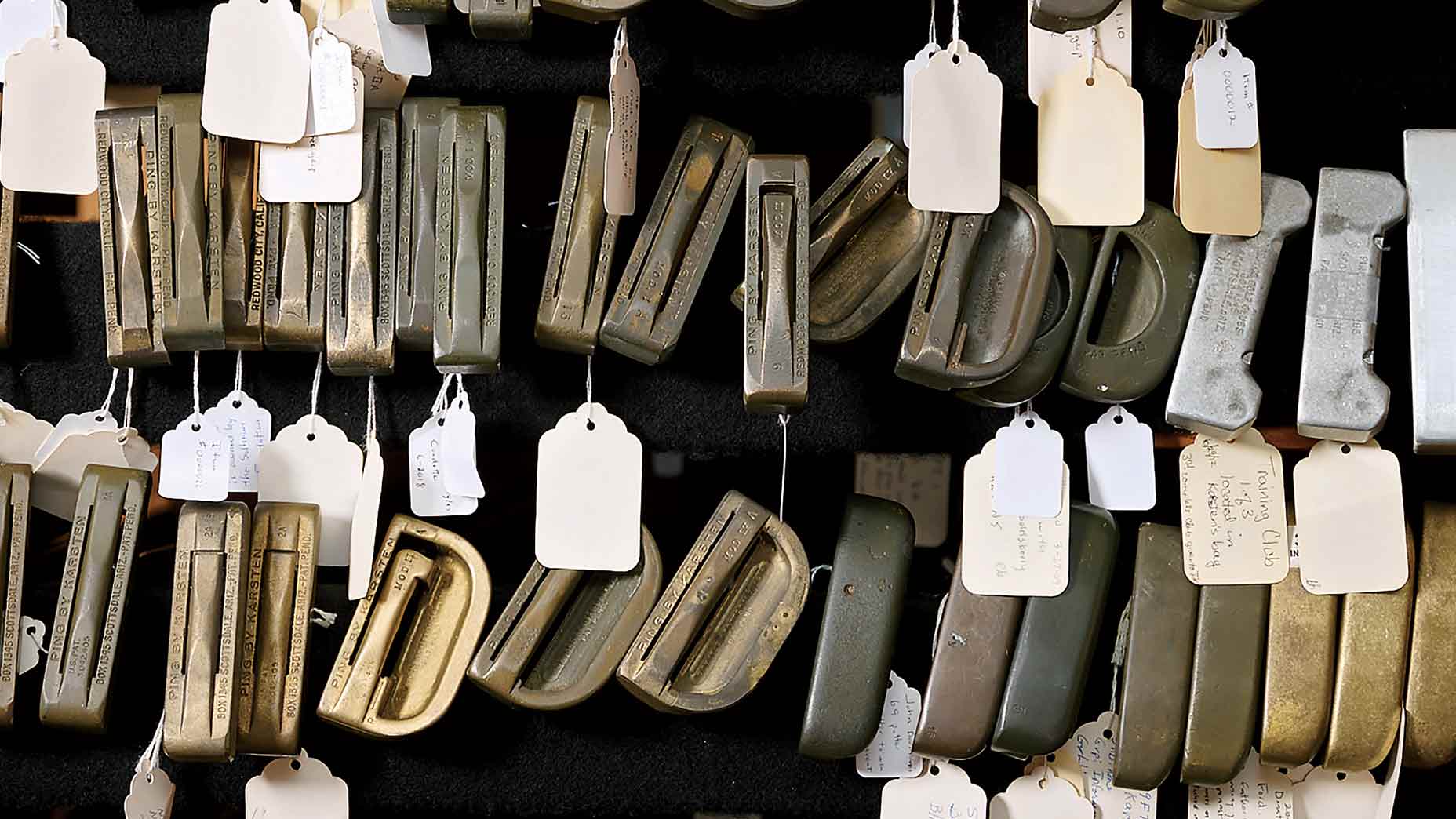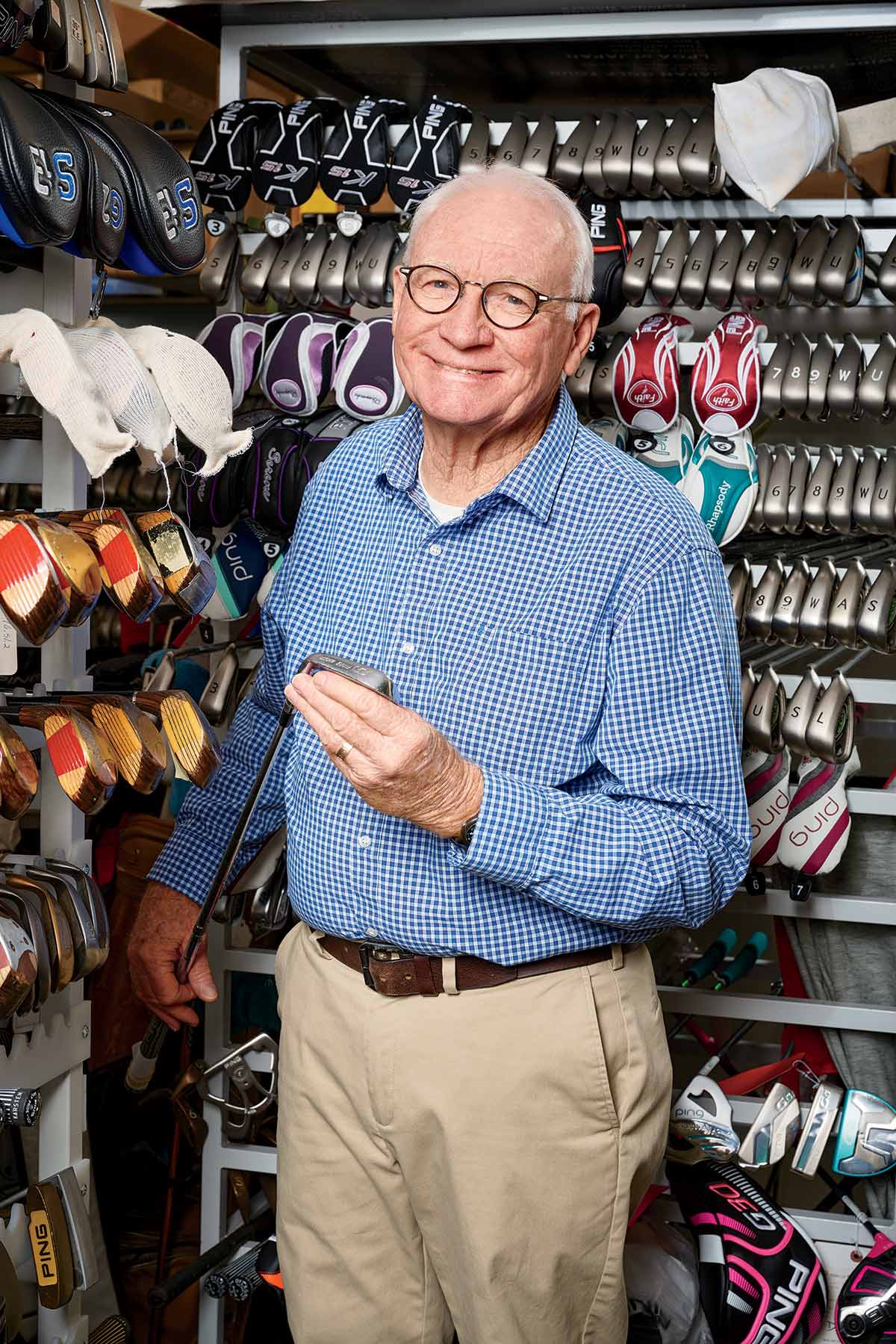King of clubs: Ping historian Rob Griffin has a library unlike any other

Ping might be the only company in golf with an official historian, but in its vast library is a whole lot more than history.
Michael Warren Williams
If the walls of Rob Griffin’s office could talk, they’d whisper.
Much of PING’s sprawling Phoenix, Ariz., headquarters is a snapshot of quintessential Corporate America: stock furniture, orderly cubicles, sharp fluorescent lighting. But step through the doorway into Griffin’s office and you’ll start to feel the ground pulse beneath you. There’s something about this office — something not fully physical but tangible nonetheless — that sets it apart from all the others like it.
Griffin knows this feeling well. As Ping’s historian, it is his life’s work.

Before he was documenting Ping’s history, Rob Griffin was capturing it.
Ping first hired him in 1986 to be the company’s staff photographer. At the time, Griffin thought that meant traveling the world on Ping’s dime to shoot photos of professional golfers. But he soon learned his work would take on a very different shot shape.
“This is a family company, and, even though I was hired to be a staff photographer, I realized quickly I was really more like the town photographer,” he says with a laugh. “I shot golf tournaments and products. But I also shot all kinds of meetings and birthday parties. I even shot some weddings.”
For that, Griffin could thank his bosses, Ping founders Karsten and Louise Solheim. The Solheims were notoriously stubborn people — the street outside the company headquarters is named “Karsten’s Way,” an apparent nod to the founder’s hardheadedness — but no cause made the family more headstrong than their business. Ping employees were treated like family and were expected to return the favor.
“Karsten was a photographer, so he could tell if things weren’t the way he wanted them,” Griffin says. “Sometimes, while I was shooting photos, I’d turn around to find him over my shoulder, moving the lights around.”
Still, Griffin was never intimidated by the boss. To be part of the Ping family has always meant being on the receiving end of a little tough love. After all, the company was built on it.
“When I was 13 years old, I was drilling holes in the shafts of the original putters,” says Karsten’s son John, whose office is not far from Griffin’s digs and who now serves as Ping’s executive chairman. “My brother [Allan] was putting grips on the clubs. I didn’t get paid to do it until I applied for a job at the grocery store.”

Griffin left the company in 2002 for the opportunity to run his own Phoenix-based camera shop, but he never let Ping wander far. Sports are in his blood — his son, David, is the general manager of the New Orleans Pelicans — and, over time, Griffin grew a deep admiration for the underpinnings of the Solheim family business. Karsten could be bullheaded, and the scope of the work could be overwhelming, but there was no question about the virtue behind it.
“To me, Ping is a story of innovation,” he says. “Really, it’s the story of the American Dream.”
One day, John Solheim, also a camera buff, phoned Griffin looking for some technical advice. That’s when Rob learned Ping was looking to hire someone for a new role.
“I’d really like to be considered for the job,” he remembers blurting out.
He had no formal qualifications for the gig Ping was looking to fill, but Solheim didn’t care.
“Rob is smart, he’s hardworking and he’s thorough,” John says. “That was enough.”
Three years after losing a photographer, Ping had gained a historian.
The first thing you notice about Rob Griffin’s office are the shelves. Towering tiers of wood and steel fill most of the wall space just beyond his desk. It takes only a few seconds to realize that this room isn’t really an office at all — it’s a library.
Still, you’ve never seen a library like this one, probably because there isn’t another like it in the world. Its contents aren’t books but golf clubs — no two of them alike.
“Do you like my collection?” says the now-76-year-old Griffin, his electric-blue eyes widening into a grin.
The size and scope of it is baffling. It’s as if the Library of Congress had taken a day trip to a PGA Tour Superstore. What makes up this collection? Griffin chuckles.
“Every single club Ping has ever made,” he says, pausing only briefly. “Well, most of them, anyway.”
This is Rob Griffin’s opus. The pursuit of the complete Ping collection, starting with the putter Karsten Solheim crafted in a basement in Syracuse, N.Y., in the late 1950s and continuing through to the present day.

Griffin estimates that the clubs in his office number in the thousands, but it’s hard to know exactly because the inventory changes almost daily. To keep the collection current, Griffin orders each new Ping release himself, finding it easier to use the company’s internal requisitioning channels than to scoop them up from the nearby factory floor. When it comes to filling in the blanks of vintage club lines, outsiders are the most common source: collectors, former Ping employees and generous strangers. But sometimes the calls come from inside the house.
“You’d be surprised how much you find lying around an old storage room on campus here,” he says. “You’d also be surprised how much you don’t find.”
The shelves of his library began overflowing a while ago, but today they’re practically overrun. On top of one shelf, a stack of boxed golf bags is wedged to the ceiling. On top of another, almost unnoticed, is a two-foot-wide statue of a fish. (“It’s Karsten’s old barracuda,” Griffin says.)
But Griffin’s library holds much more than vintage clubs and fishing trophies. A near-complete history of Ping can be found here. That story matters deeply to the Solheims — not because it’s their past, but because it’s their future.
“My brothers and I aren’t going to be around forever,” John Solheim says. “I want people to know we’re a company that tries the best we can to do it right.”
Some days, the importance of Griffin’s meticulous work can be seen in the wandering eyes of Ping’s engineers, who, for inspiration, stop by his office to poke through Karsten’s old inventions. And, some days, it hits the Solheim family right in the heart.
“See this?” John says, pointing to a Los Angeles Open flag hung by Griffin and signed by the former Ping Tour staff player Kirk Triplett. “You know why it’s sitting outside my office?”
Suddenly, there’s a tear in his eye.
“It’s from 2000, [Kirk’s] first PGA Tour win,” Solheim says, his voice cracking. “It was the week following my dad’s passing.”
This, it turns out, is the pulse in the air at Ping HQ. The energy that inspired a club company to hire a historian in the first place. It took Rob Griffin a while to learn what it is, but now it’s his only — and most essential — job.
“It’s culture,” he says.










